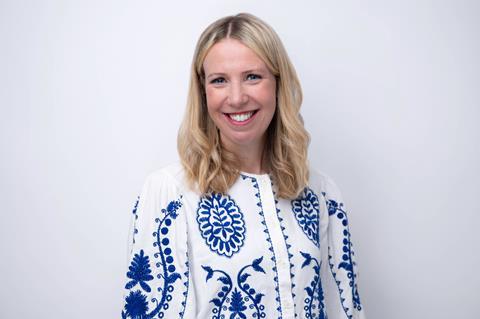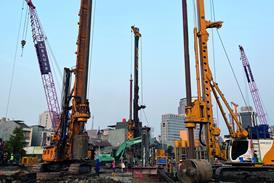A diverse and inclusive working enviornment is no longer a ânice-to-haveâ but now a necessity for a business to thrive, says Vanessa Murray, founder and director of The Circle Partnership

Equity, diversity and inclusion (EDI) has too often been pushed to the sidelines, treated as a separate âspecialistâ initiative or â when it comes to gender specifically â narrowly labelled as âwomenâs or childcare issuesâ. In organisations that have commitments in this area, action is typically led by those whom it affects, and broader engagement in the topic is sorely lacking.
In todayâs built environment industry, howveer, where we face talent shortages, rising demands for innovation and changing workforce expectations, that approach just doesnât cut it anymore.
Bringing gender equity out of the shadows and making it central to organisational priorities and progress isnât just a nice idea; itâs a business necessity.
>> Also read: The men speaking up about gender equality in construction
This shift in thinking was front and centre at one of our recent Circle Academy events, where professionals from across the built environment gathered for an open and practical discussion on male allyship. As part of our commitment to raising broader awareness of the issues around gender diversity, and our recognition that we need to engage a wider audience in this topic to have a chance of delivering real change, we orchestrated a 50/50 audience split of men and women.
All of our female Circle Academy mentors and mentees were required to bring a male guest, and attendees were invited to respond to a simple but powerful question: What are the most impactful actions we can take to improve the gender balance in our industry?
The answers showed a growing understanding that real change wonât come from policy alone. Three key priorities stood out:
Leaders must invest in long-term cultural change
Superficial ticking of diversity boxes through one-off training sessions, EDI committees or even maternity and paternity policies donât tackle the deeper biases and structural barriers that hold us back from making real change. Genuine progress means leaders committing longer-term investment to acknowledging and addressing current cultural issues and shaping future workplace cultures where everyone feels valued and able to thrive.
Men need to be part of the solution and not sidelined
Too often, conversations around equity make men feel defensive or excluded. We forget that the very definition of inclusion means that these issues involve everyone.
Men have a crucial role to play as allies â listening, learning and using their influence to help create fairer workplaces. Allyship isnât about guilt, itâs about partnership and shared responsibility â and the deep recognition that more equitable working environments truly benefit everyone, not just women.
More diversity equals more innovation, more profitability, more work-life flexibility. And that is a win for all.
Changing outdated biases and attitudes
Bias is often invisible but can have a huge impact on who gets hired, who moves up, and who is seen as âleadership materialâ. Addressing these hidden barriers opens the door for more talent to shine and for decisions to be made on merit rather than stereotypes.
These biases and assumptions also contribute to the prevalence of microaggressions and stereotypes that research repeatedly shows are critical factors that push women to leave their roles. Successfully addressing these could have a significant impact on the retention of female talent and solving the industryâs skills crisis.
For the built environment to flourish in the years to come, gender equity has to move from being a ânice-to-haveâ to a strategic priority embedded in leadership and culture
A key foundational takeaway from the Circle Academy event was the need to be inclusive in the equity conversation itself. If EDI efforts are seen as benefiting only one group, they risk alienating others whose support is vital. But, when inclusion is treated as a shared goal, it builds momentum and a stronger culture of respect and empowerment.
The discussion also highlighted the fact that allyship is about participation and a willingness to learn, not about having all the answers.
Looking ahead, for the built environment to flourish in the years to come, gender equity has to move from being a ânice-to-haveâ to a strategic priority embedded in leadership and culture. Bringing EDI out of the shadows and involving everyone in creating a truly inclusive future will unlock huge potential for the industry.
As one attendee at the event put it: âOur industry knows how to build. Now we need to build workplaces where everyone can thrive.â
Vanessa Murray is the founder and a director of The Circle Partnership























No comments yet